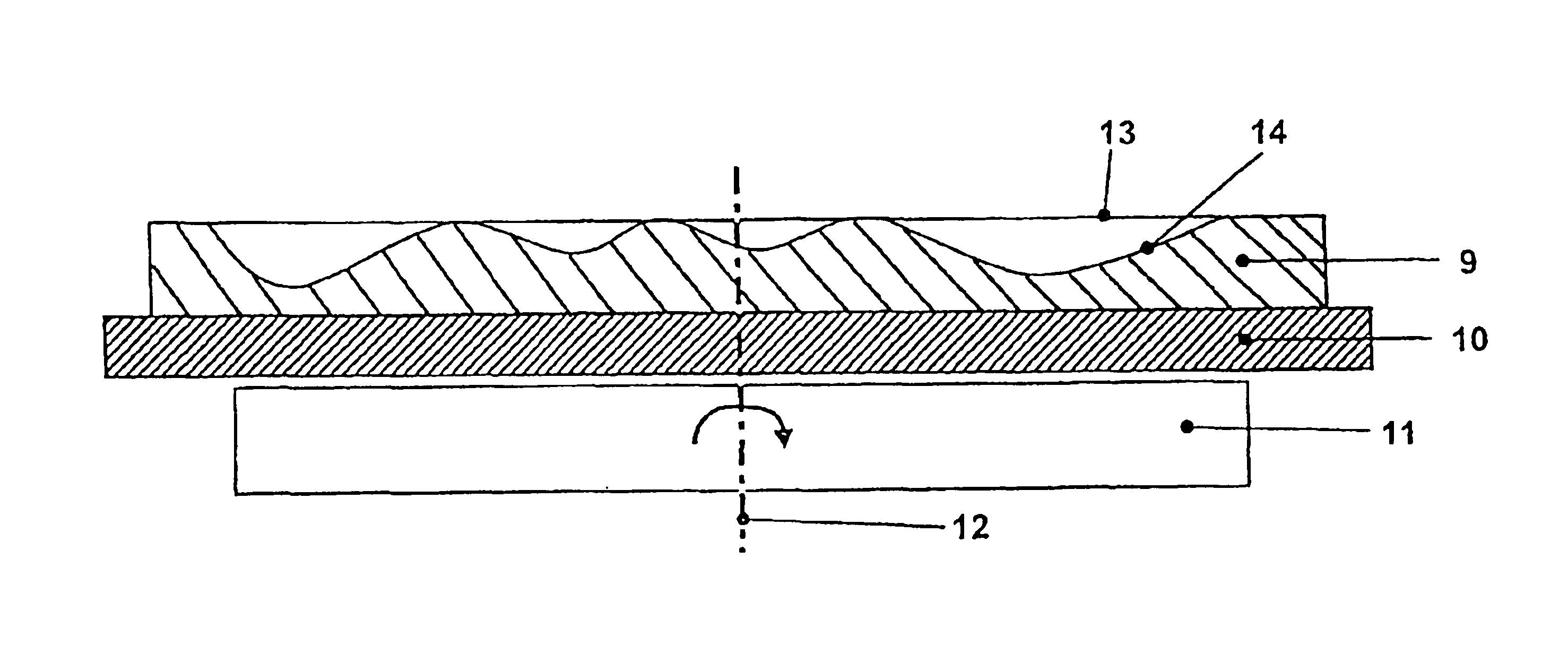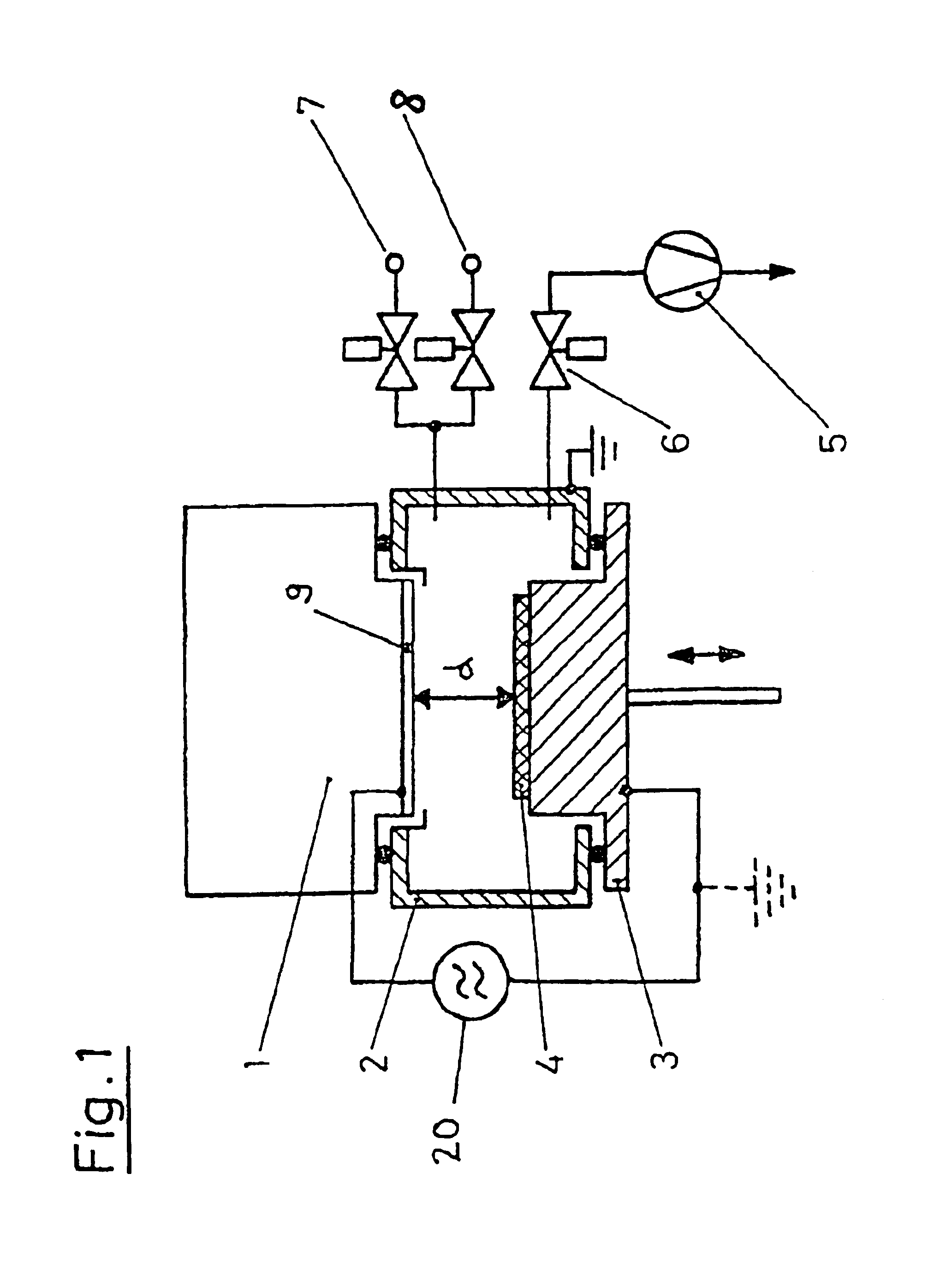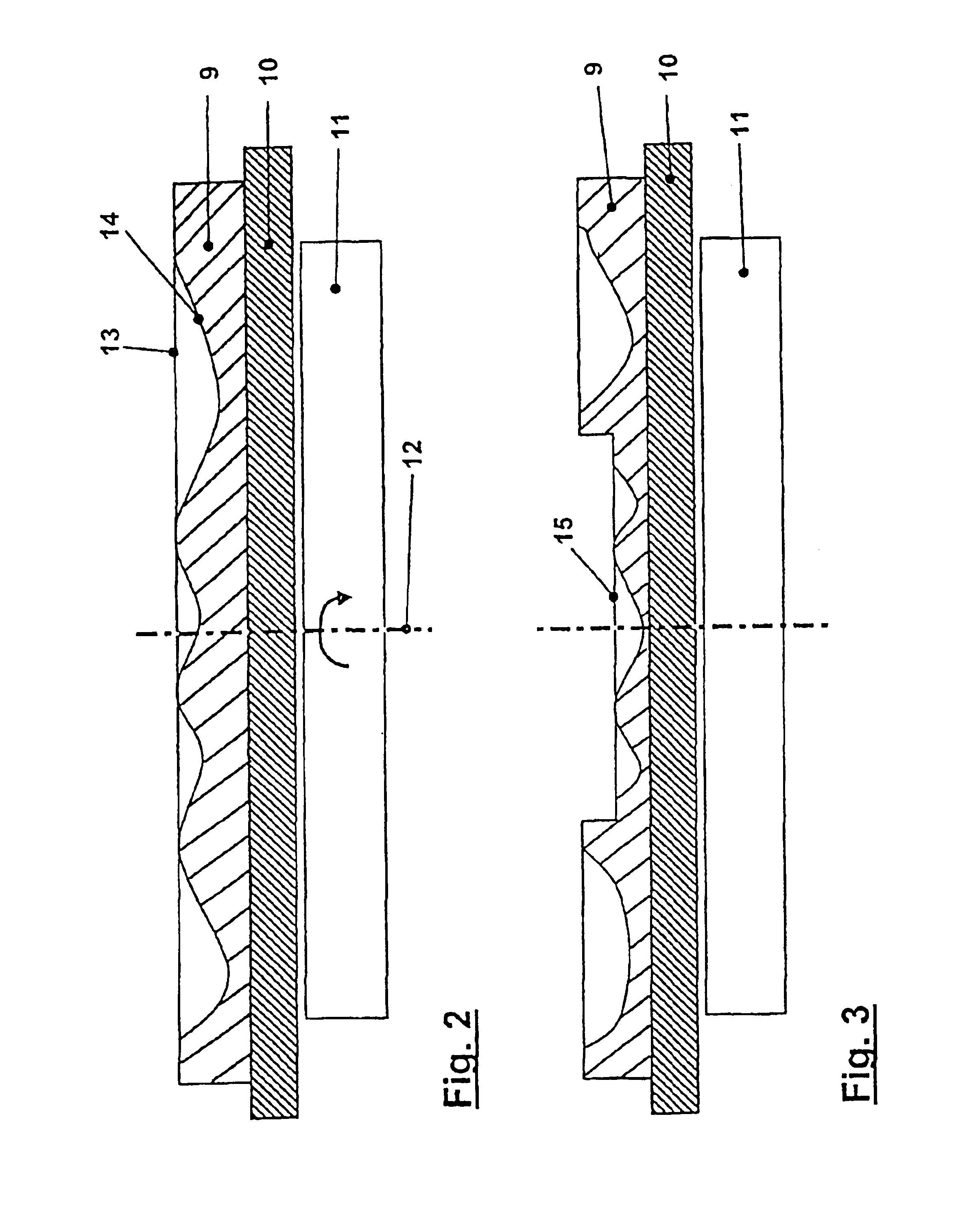Target comprising thickness profiling for an RF magnetron
a technology of rf magnets and target plates, applied in the direction of electrodes, diaphragms, ion implantation coatings, etc., can solve the problems of increasing the sputter rate of regions, and achieve the effect of increasing the sputter rate, and having a special type of correction capability
- Summary
- Abstract
- Description
- Claims
- Application Information
AI Technical Summary
Benefits of technology
Problems solved by technology
Method used
Image
Examples
Embodiment Construction
.
[0023]High frequency sputtering sources for vacuum coating processes are employed in varied manner. Especially the magnetron sputtering technique with magnetic field-enhanced plasma generation is preferably employed due to the high attainable rates and due to the capability of affecting the sputtering characteristic via the magnetic field. Sputtering sources of this type can be developed in different geometries, for example tubular with target tubes also rotating, planar with targets disposed a really, such as rectangular cathodes, or also round cathode configurations, or also as cathodes developed in the form of an arch or those developed hollow. In order to attain a good distribution of the deposited layer, the workpieces or the substrates to be coated can be moved with respect to the sputtering target. But they are often used for fully automated installations, so-called static coating configurations, in which the workpiece is stationarily disposed at a distance of a few centimet...
PUM
| Property | Measurement | Unit |
|---|---|---|
| frequency | aaaaa | aaaaa |
| frequency | aaaaa | aaaaa |
| frequency | aaaaa | aaaaa |
Abstract
Description
Claims
Application Information
 Login to View More
Login to View More - R&D
- Intellectual Property
- Life Sciences
- Materials
- Tech Scout
- Unparalleled Data Quality
- Higher Quality Content
- 60% Fewer Hallucinations
Browse by: Latest US Patents, China's latest patents, Technical Efficacy Thesaurus, Application Domain, Technology Topic, Popular Technical Reports.
© 2025 PatSnap. All rights reserved.Legal|Privacy policy|Modern Slavery Act Transparency Statement|Sitemap|About US| Contact US: help@patsnap.com



